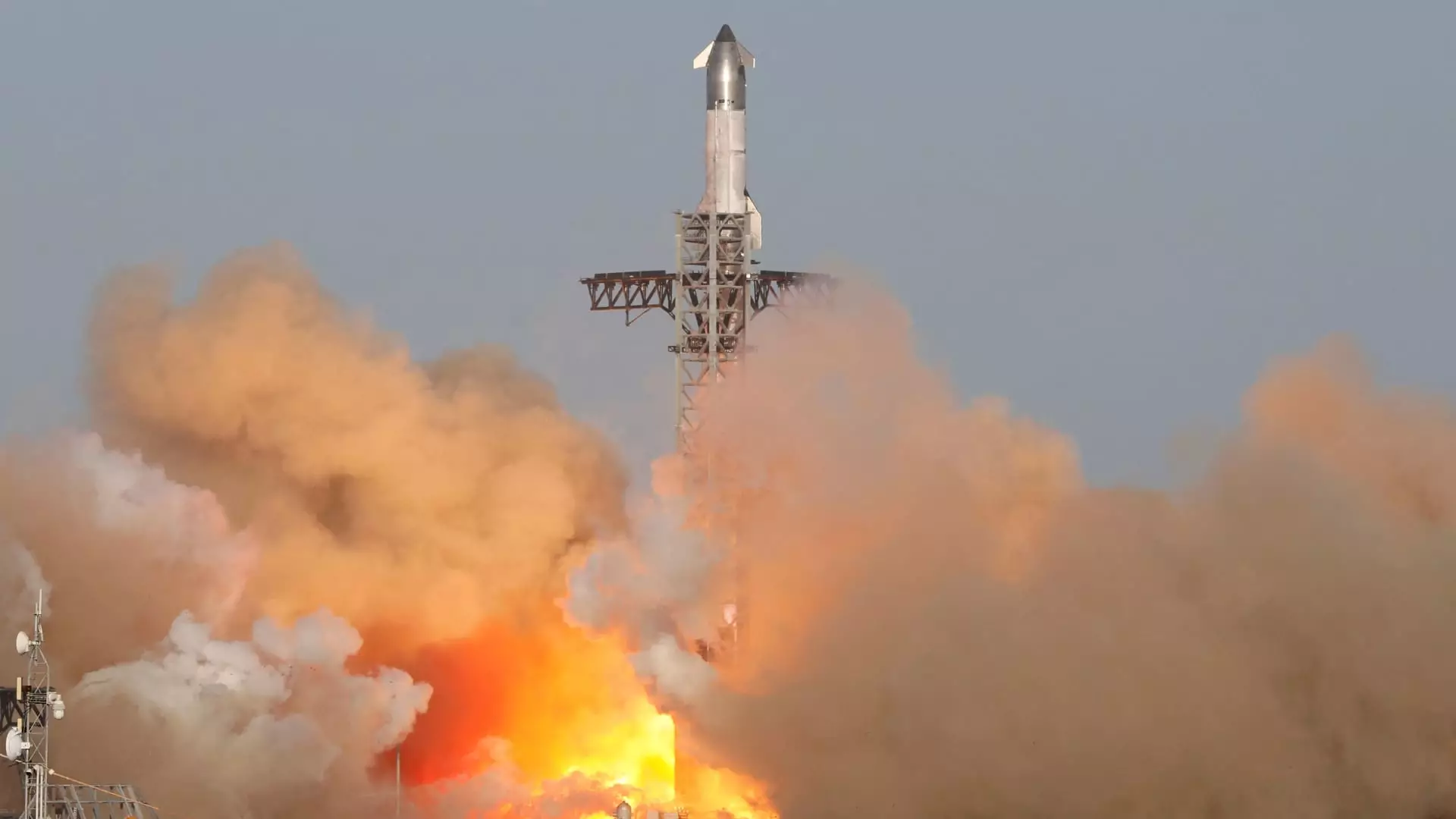On a balmy Thursday night, an event occurred that rippled across the aviation industry, briefly halting flights in and out of multiple Florida airports. In an unfortunate turn of events, a SpaceX Starship testing failure led to debris raining down from the sky, once again reminding us of the precarious balance between aeronautical innovation and safety. This incident adds to a growing list of mishaps associated with SpaceX’s ambitious flight tests, raising questions about the feasibility of the company’s lofty objectives and its impact on commercial aviation.
Starship’s repeated failures aren’t just statistical anomalies—they constitute a broader trend that could pose real risks to the unwitting public and the airlines that rely on safe and predictable operations. When the Federal Aviation Administration (FAA) finds it necessary to shut down major hubs like Miami International Airport, the repercussions extend far beyond a temporary inconvenience. It’s not simply a flight delay; it’s a crack in the foundation of our shared trust in both aerospace innovation and established air travel protocols.
Commercial Airlines vs. Space Ambitions
There’s a fundamental clash at play: the aspirations of a private aerospace company like SpaceX versus the legacy of commercial aviation institutions. Airlines, entwined in a web of schedules and obligations, face chaotic disruptions that stem from an early-stage, experimental program. The FAA’s role in this scenario is problematic. It seems torn between fostering innovation and ensuring public safety, a tension exacerbated by recent events. As we push boundaries, we must question who bears the burden when ambitious endeavors go astray.
SpaceX’s reliance on a model that often puts the “experimental” before the “safe” could lead to a hazardous precedent. Just last January, a similar debacle forced the diversion of numerous flights when a Starship rocket broke apart mid-air. The FAA appropriately warned pilots of the danger posed by falling debris, demonstrating a clear acknowledgment of the risks involved. Hence, one has to wonder: how long can we afford to prioritize rapid development over stringent safety measures?
The Regulatory Dilemma
The FAA has recently mandated that SpaceX initiate a comprehensive investigation into this latest failure. However, this feels somewhat reactive rather than proactive, especially considering the prior incidents within the very same year. One must ponder the financial and reputational motivations behind the FAA’s seemingly lenient approach to SpaceX. The aerospace company, led by the charismatic yet controversial Elon Musk, has significant political clout, especially with ties to the former administration, raising eyebrows about potential conflicts of interest.
With the FAA allowing SpaceX to conduct another test flight before completely understanding the implications of the previous mishap, serious questions arise about oversight and the balance of innovation with regulation. Are we, as a society, willing to gamble with public safety to accelerate advancements in space technology? The answer to this question may define the future of both space exploration and aviation.
The Overshadowing Influence of Musk
Elon Musk is not only a titan of industry but also a figure who stands at the intersection of technology and politics. His role as an advisor to the former President has only heightened scrutiny over whether SpaceX’s endeavors receive the necessary oversight or if they are propelled forward by personal connections and ambitions. Democratic lawmakers have expressed valid concerns about potential risks, including security implications and ethical questions surrounding FAA oversight.
The potential for conflicts of interest in regulatory agencies could lead to lax enforcement of safety protocols, not just for SpaceX but across the aerospace industry. Every time an experimental flight goes wrong, all eyes are on the regulator—are they doing enough to protect the citizenry from the fallout of corporate ambition? The answer could shape the future landscape of both space travel and commercial aviation.
The real issue isn’t simply about rockets and flight paths; it’s a challenge to traditional norms in safety and oversight. As experimentation in aerospace accelerates, the FAA and stakeholders need to reinforce their commitment to safeguarding the public. It’s a delicate balance between celebrating innovation and ensuring it doesn’t come at a catastrophic cost—one that we must navigate with unwavering vigilance, lest we lose sight of the safety that modern aviation has fought so hard to achieve.

